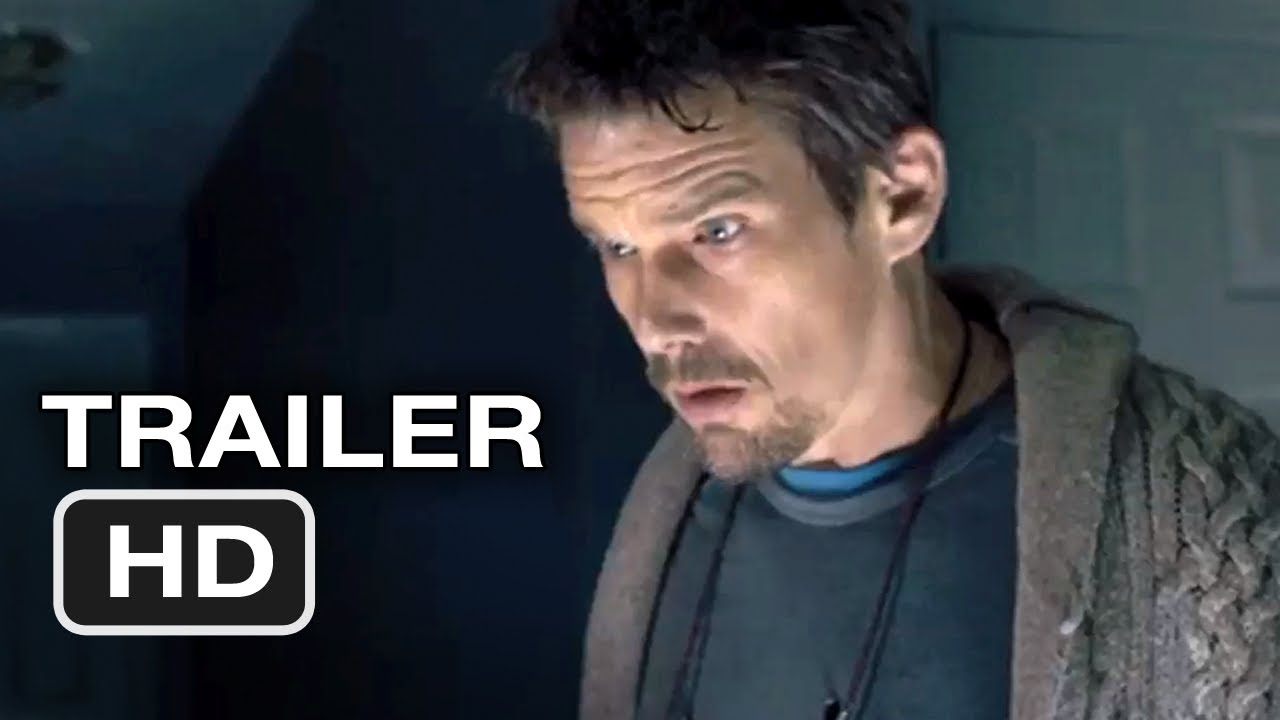Sinister (2012)

“Sinister,” directed by Scott Derrickson and released in 2012, is a film that skillfully combines elements of psychological horror with supernatural terror, delivering a gripping and unsettling experience. Known for its eerie atmosphere, chilling performances, and effective use of found footage, “Sinister” has garnered significant acclaim within the horror genre for its ability to invoke dread and suspense.
The narrative of “Sinister” centers on Ellison Oswalt, a true-crime writer played by Ethan Hawke, who moves his family into a new house with the hope of finding inspiration for his next book. The house, however, holds a dark and sinister secret. While unpacking, Ellison discovers a box of old home movies in the attic, which lead him to uncover a series of disturbing and inexplicable events linked to the previous occupants of the house. As he delves deeper into the investigation, Ellison and his family become increasingly entangled in a malevolent supernatural force that preys upon their darkest fears.

One of the film’s most striking features is its use of found footage. The home movies discovered by Ellison are central to the plot and are used to reveal the horrifying nature of the supernatural entity known as “Bughuul” or “Mr. Boogie.” These films, which show the violent deaths of previous families, are presented in a grainy, unsettling style that heightens their authenticity and adds to the overall atmosphere of dread. The found footage technique is particularly effective in “Sinister” because it blurs the line between reality and fiction, making the horror feel more immediate and personal.
Ethan Hawke delivers a compelling performance as Ellison Oswalt, portraying the character’s descent into obsession and paranoia with intensity and nuance. Hawke’s portrayal of a man driven to the brink by his pursuit of truth and success is central to the film’s psychological depth. His growing obsession with the case, coupled with the mounting tension and fear, creates a palpable sense of unease that drives the narrative forward.

The film’s atmospheric tension is enhanced by its meticulous cinematography and sound design. The visual style of “Sinister” utilizes dim lighting, claustrophobic spaces, and unsettling camera angles to create a sense of foreboding. The eerie score, composed by Christopher Young, further amplifies the film’s mood, using discordant tones and unsettling melodies to evoke fear and anticipation.
A central theme in “Sinister” is the idea of the past haunting the present. The film explores how unresolved traumas and dark secrets can linger and influence subsequent events. Ellison’s discovery of the home movies and his subsequent investigation serve as a metaphor for the way in which the past can resurface and disrupt the present. This theme is mirrored in the supernatural element of the film, where the malevolent entity preys on families, repeating a cycle of violence and terror.

The character of Bughuul, or Mr. Boogie, is a significant element of the film’s horror. The demon is depicted as a sinister, child-like figure whose presence is both terrifying and enigmatic. The design of Bughuul, with his pale face and eerie smile, combined with his manipulation of children, contributes to the film’s unsettling atmosphere. The use of Bughuul as both a psychological and supernatural antagonist amplifies the film’s horror, creating a figure that embodies the fear of the unknown and the supernatural.
“Sinister” also addresses themes of guilt and responsibility. Ellison’s pursuit of the truth comes at a great personal cost, impacting his family and leading to tragic consequences. The film portrays the consequences of Ellison’s actions and obsession, highlighting how personal ambitions and flaws can lead to disastrous outcomes. This theme adds an additional layer of complexity to the narrative, making the horror not just about supernatural threats but also about the psychological toll of personal failure and obsession.

Despite its strengths, “Sinister” is not without its critics. Some viewers have found the film’s reliance on jump scares and found footage conventions to be formulaic. Additionally, the ending, while shocking and effective, has been interpreted by some as a departure from the film’s otherwise tightly woven narrative. However, for many, these elements contribute to the film’s overall impact, creating a blend of psychological tension and supernatural horror that resonates deeply.
In conclusion, “Sinister” is a standout entry in the horror genre, distinguished by its effective use of found footage, atmospheric tension, and psychological depth. Scott Derrickson’s direction, combined with Ethan Hawke’s performance and the film’s unsettling visual and auditory elements, creates a powerful and disturbing cinematic experience. Through its exploration of the haunting effects of the past and the psychological impact of obsession, “Sinister” offers a chilling and memorable addition to the landscape of modern horror cinema.











